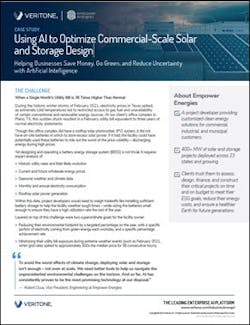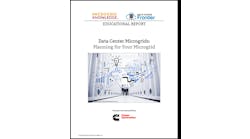Why you should use AI to optimize your solar and storage system design
The aftermath of 2021’s Winter Storm Uri was devastating to residents and businesses alike — even more so when the energy bills for that month came due. One company in Plano, Texas, found that its February 2021 bill was “equivalent to three years of normal electricity statements,” according to a new white paper from Veritone. The office had a solar system on the roof, but no battery energy storage system (BESS) to help it manage energy price volatility.
The company hired Empower Energies to come up with an energy storage solution that would provide resilience, reduce its carbon footprint and mitigate the risk of high energy bills during future severe weather events.
There are many challenges to designing a battery energy storage system, Veritone says. Doing so requires analysis of both historic and predicted future data points, including utility rates, wholesale energy prices, weather and climate data, electricity consumption and solar photovoltaic power generation.
Artificial intelligence (AI) is a powerful way to ingest and analyze all of that data — and to generate actionable intelligence.
The combined profit potential from participating in ERCOT’s Ancillary Service programs, demand response and the nonmonetary value in providing backup power collectively exceeded the value through arbitrage alone. — Veritone, “Using AI to Optimize Commercial-Scale Solar and Storage Design“
The paper outlines how AI and machine learning were used to evaluate historical price, load and solar generation data. According to Veritone, using simulation models and the artificial intelligence-powered iDERMS software, Empower was able to determine which BESS configuration would “help the facility owner maximize revenues while controlling runaway energy spending.”
Veritone includes key takeaways and results on how AI was able to optimize the solar and storage system for this commercial customer.
Download the white paper for free from the Microgrid Knowledge white paper library.








